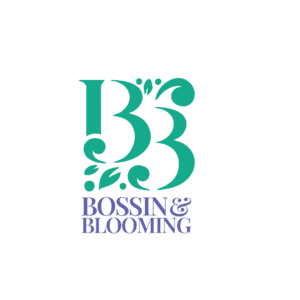Budget Check-In: How to Prep Finances Before the Holiday Season
Share
Dreading holiday overspending? Learn how a simple October budget check-in can
help you manage money, plan finances, and enjoy a stress-free holiday season.
I need to confess something. For years, my favourite time of year was also my most dreaded.
As the first hints of autumn appeared, a knot would form in my stomach. It wasn’t about the
colder weather or shorter days. It was the looming, glittering, and overwhelmingly expensive
holiday season. I’d watch my bank account, which I’d carefully nurtured all year, take a
nosedive between November and January, leaving me to start the new year in a financial hole.
One year, it was particularly bad. I remember sitting on my floor surrounded by receipts and
credit card statements in mid-January, feeling a potent mix of shame and frustration. I had
overspent on everything—gifts, parties, travel, even the festive groceries. The joy of the
season had completely evaporated, replaced by a mountain of debt. It was a painful,
humbling moment, but it was also the turning point. I promised myself I would never feel that
way again.
That’s when I created my pre-holiday financial ritual: the October budget check-in. It’s not
about restriction or scarcity; it’s about intention and control. It’s the single most powerful
habit I’ve built for my money management, and it has completely transformed my
relationship with my holiday season finances. If you’ve ever felt that post-holiday financial
hangover, I want to share my story and the exact steps I take to walk into the holidays feeling
prepared, peaceful, and in complete control. This isn’t just about saving money; it’s about
saving your peace of mind.
The Power of a Pre-Holiday Check-In
Most of us put off holiday budgeting until the last minute. We might have a vague number in
our heads, but we don’t get serious until the shopping trips are already happening. The
problem with this approach is that you’re already in a reactive state. The sales are tempting,
the social pressure is on, and you’re making emotional spending decisions.
An October budget check-in flips the script. It happens before the chaos begins, giving you
time to look at your finances objectively. It’s a moment of calm, strategic planning that sets
the foundation for a stress-free season. This isn’t just about avoiding debt; it’s about aligning
your spending with what truly matters to you during the holidays. This is one of the most
crucial financial planning tips I can offer.
My 4-Step Guide to a Holiday Budget Check-In
I grab a cup of tea, my favourite notebook, and dedicate one quiet evening to this process. It
has become a ritual I genuinely look forward to because I know the clarity it provides is
priceless.
Step 1: The Honest Financial Snapshot
Before you can plan where you’re going, you have to know where you stand. The first step is
to get brutally honest about your current financial picture. I open my banking app and my
budget spreadsheet and look at three key numbers:
Monthly Income: What’s coming in after taxes?
Fixed Expenses: What are my non-negotiable monthly costs (rent/mortgage, utilities,
loan payments)?
Variable Spending: Where has my money been going for the last 1-2 months
(groceries, entertainment, subscriptions)?
Looking at my variable spending was the real eye-opener for me. I saw how little
“leaks”—like daily coffees or unused subscriptions—were adding up. This isn’t an exercise in
judgment. It’s about gathering data. Once you have these numbers, you can calculate your
current monthly surplus (or deficit). This is the starting point for your holiday fund.
Step 2: Define Your Holiday “Why” and Set a Number
This is my favourite part, and it’s where the “touching” part of this powerful blog comes in.
Before you even think about dollars and cents, think about feelings. How do you want to feel
this holiday season? Peaceful? Connected? Generous? Joyful?
I realized my past overspending came from a place of trying to buy that festive feeling. I
thought more gifts and fancier decorations would make the season more special. It was a trap.
Now, I write down three words that define my ideal holiday feeling. For me, they are usually
“connection,” “coziness,” and “peace.”
With those feelings in mind, I start creating a holiday-specific budget. I list every potential
holiday expense I can think of:
Gifts: For family, friends, coworkers, etc. I list each person and a target amount.
Events: Parties, special dinners out, tickets to a show.
Travel: Gas, flights, hotels.
Decor: Tree, lights, new ornaments.
Food: Special holiday meals, baking supplies, wine.
Giving: Charitable donations.
I assign a realistic number to each category. Adding it all up can be shocking, but it’s better to
be shocked in October than in January. This total becomes your “Holiday Number.”
Step 3: Create a “Sinking Fund” Strategy
Once you have your Holiday Number, the question is: where will this money come from?
You have about two and a half months until the peak spending season. This is where a sinking fund comes in. A sinking fund is simply a savings account where you put away a
specific amount of money each month for a dedicated goal.
Divide your Holiday Number by three (for October, November, and early December). This is
your monthly savings target. For example, if your total is $1,200, you need to find $400 a
month.
Now, go back to your financial snapshot from Step 1. Where can you find that money?
The “Leaks”: Can you pause some subscriptions? Make coffee at home? This is
where I found an extra $100 a month easily.
Trim Categories: Can you reduce your “eating out” or “entertainment” budget
temporarily?
Get Creative: Can you sell some things online? Pick up a few extra hours at work?
I automate this process by setting up an automatic transfer from my checking account to a
separate, high-yield savings account that I nicknamed “Holiday Joy.” When the money is out
of sight, I’m not tempted to spend it.
Step 4: Plan Your Spending (And Stick to It)
With your fund growing, the final step in your holiday budgeting is to create a spending
plan. This is your defence against impulse buys and sale-season madness.
Track Everything: I use a simple app (or you can use your notebook) to track every
single holiday-related purchase. When I buy a gift for my brother, it goes in the app
and is deducted from my “Gift” category total. This real-time tracking is a game-
changer.
Use Cash or a Dedicated Card: To keep things extra clear, you can pull out cash for
your shopping trips or use a specific debit/prepaid card that is loaded only with your
holiday funds.
Remember Your “Why”: When you’re tempted to splurge on something that isn’t in
the budget, revisit your three words. Will this purchase bring you more “connection”
or “peace”? Or will it bring you stress in January? This simple question has saved me
thousands.
Your Invitation to a Stress-Free Holiday
This October check-in process took me from feeling like a victim of the holiday season to
feeling like its creator. I now design a season that is rich in meaning, not in cost. The gifts I
give are more thoughtful, the experiences I plan are more intentional, and the peace I feel on
January 1st is absolute.
You deserve to experience that, too.
Don’t let another year go by where financial stress steals your holiday joy. Take an evening
this week. Put on some music, pour yourself something warm, and give yourself the gift of
this budget check-in. It is an act of profound self-care.
If this story resonated with you—if you’re ready to take control of your finances and build a
life that feels as good on the inside as it looks on the outside—then you’re in the right place.
This is the kind of real, honest money talk we have here. Subscribe to my blog below for
more stories, tips, and a supportive community to help you on your journey. Let’s build a
financially confident future, together.




Be Social
Join Followers